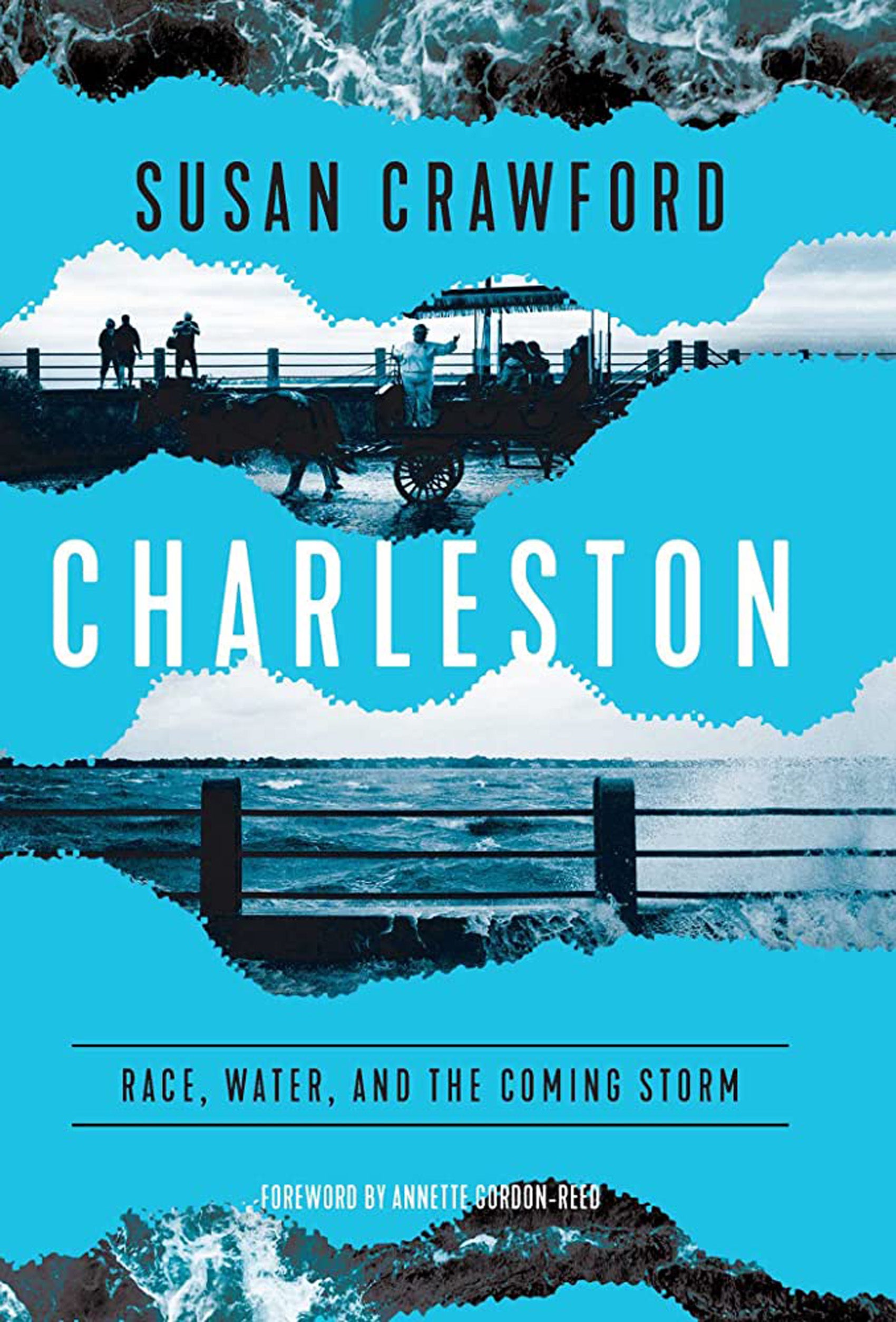For people who vacation in Charleston, South Carolina, one of the most popular tourist destinations in the United States, the city features attractions such as art galleries, boutique shopping, and fine Southern cuisine. But talk to residents, in particular, residents of color — as Susan Crawford, the John A. Reilly Clinical Professor at Harvard Law School, did over several years — and a different picture emerges.

In her book “Charleston: Race, Water, and the Coming Storm,” Crawford digs beneath the surface of the celebrated city to reveal economic and racial disparities, as well as a crisis of increasing flooding, upending the lives of its most vulnerable residents. While focused on Charleston, the book also argues that as the earth warms and waters rise, residents in coastal cities everywhere, including millions in the United States, will face displacement from uninhabitable homes.

The problem is acute in Charleston, she writes, because of its low elevation and the number of primarily Black and low-income residents living in the worst of the flood zones, which have seen a vast increase in water over the last several years. The book traces the history that established Black residential areas in parts of the city that now face some of the worst water damage in the region and details how typically white areas with higher property values receive the benefits of most flood-mitigation efforts. The author contends that local government has prioritized tourism and growth over protecting current residents amid an atmosphere of, as one resident put it, “raging politeness” that masks racial tension.
“In all its bravura, complacency, and cruelty,” writes Crawford, “Charleston’s relationship with its current and future flooding woes expresses much about the underside of American life: an obsession with development and property rights above all else, undergirded by centuries of racism.”
In an interview, Crawford acknowledged that her views of Charleston were once similar to those of the starry-eyed tourists who descend on the city. She visited in the early ’90s and thought of it as “a dreamlike, romantic, beautiful place.” She began to gain a different perspective in 2018, when she interviewed Joseph Riley Jr., who was mayor of Charleston for 40 years beginning in 1975, for a class she taught at Harvard Law about cities. She had spoken beforehand with journalist Jack Hitt, a Charleston native, who advised her to ask Riley about water in the city. She recalled that when she did, the former mayor, otherwise gregarious, had little to say, other than, “It’s going to be very expensive.” That interview launched her on a quest to understand what makes Charleston the way it is today, its history, and the threats it faces, she said.
“AsI got more deeply into the story,”said Crawford, “I became convinced that Charleston as a beautiful miniature vessel for this sea-level-rise narrative was nearly perfect. It is everything about America in a very small package.”
“As I got more deeply into the story, I became convinced that Charleston as a beautiful miniature vessel for this sea-level-rise narrative was nearly perfect. It is everything about America in a very small package.”
Susan Crawford
She traveled to Charleston to attend public meetings and talk to residents as her teaching schedule allowed, including about eight weeks in 2020 while teaching remotely because of COVID-19. It was important to her to present the story of Charleston through the voices of Black residents most affected by the city’s conditions. They tell of trips to the hospital waylaid by impassable drenched streets; a Black church with streams of water from high tides outside its door on a dry, sunny day; long-thwarted efforts to remove the towering statue of South Carolina pro-slavery politician John Calhoun until the city finally relented in 2020; and downtown businesses that seek to limit the number of Black customers.
Crawford, who served as special assistant to the president for science, technology, and innovation policy during the Obama administration, previously wrote about technology, most recently in her book “Fiber: The Coming Tech Revolution — and Why America Might Miss It.” While her new book’s topic is a departure for her, she said all her writing strives to understand “what is basic for any human being to thrive in America,” whether internet access or safe housing.
The book traces the history that established Black residential areas in parts of the city that face some of the worst water damage in the region.
To address the climate problem, she proposes that Charleston and other endangered places consider what she calls “strategic relocation,” whereby the government provides financial support and alternative housing options to relocate people living in coastal housing in danger of being overrun by water in the not-too-distant future. Such a move will be “accompanied with profound grief, dislocation, displacement, and loss,” Crawford said, and will require significant resources as well as community engagement. But the cost of doing nothing will be much higher. We are now spending billions of dollars on rebuilding after increasingly destructive disasters yet doing little planning for a time when the land simply won’t be there anymore, she said. The Netherlands is the only country she’s aware of that is currently considering the need to move large settlements away from the coast.
“Everybody else,” she said, “is hoping that things will resolve themselves, or that it will be enough for the richest inhabitants to easily find homes inland, leaving the rest to struggle for themselves. But that’s not tenable, in my opinion. That leaves a lot of people behind. We can afford to pay for what we decide is important.”
